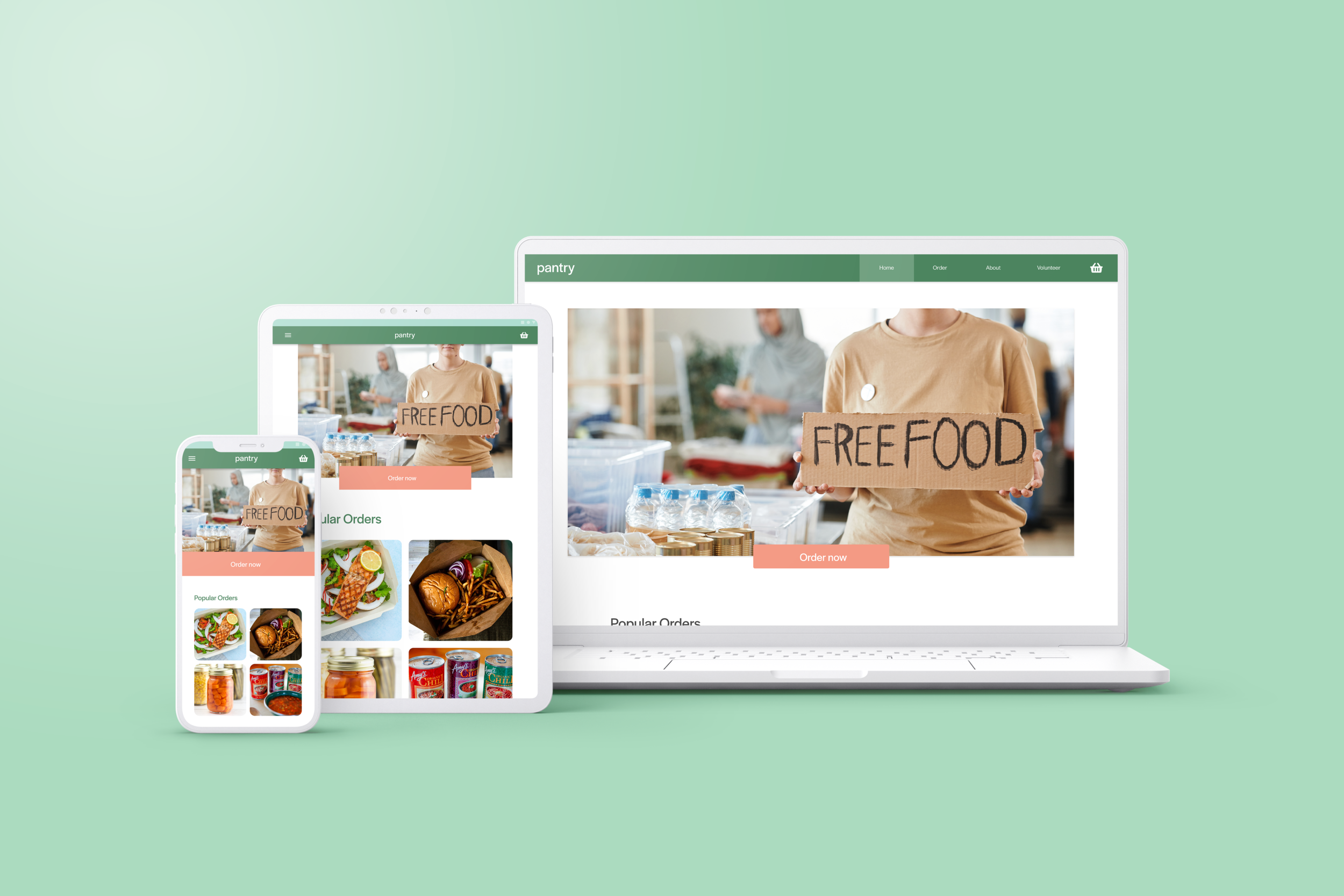
Pantry Community Outreach
Case Study
UX design and research by Chloe Flanders
Third case study for the Google UX Design Certificate program
the product:
Pantry is a Kentucky based organization focused on food insecurity. The organization needed a tool that would take grocery and meal orders for users who would need to go to a food bank but don’t have the means of transportation to do so. Pantry’s primary target users include low-income families.
Tools used include Adobe XD and Photoshop
the problem:
The Appalachian region consists of many rural food deserts, which the U.S. Department of Agriculture defines as a county where the closest grocery store is more than 10 miles away. On top of that, 20% of the region is considered food insecure. The team at Pantry has identified that a lack of transportation is a common factor why people struggle to get to a food bank.
the goal:
Design an easy to use app for users to place grocery and meal delivery orders, free of charge.
my role: UX designer and researcher
user research
wireframing
prototyping
visual design
user research
After collecting data on rural food insecurity and food desserts, I prepared to learn from food bank volunteers how they help to combat food insecurity, and who was most at risk. I learned that children are more at risk of going hungry, which can cause developmental health issues and poor physical health.
One local library started a summer reading program with the goal of helping children who were reliant on school lunches to get meals while classes were out of session. The workers packed sack lunches which kids could take and eat at the library or to go. They noted that some parents don’t come in with their kids when they get their lunch, possibly because of embarrassment from the home situation that led them there in the first place.
personas
Age: 68
Education: Highschool
Hometown: Meigs County, Ohio
Family: Husband, adult daughter
Occupation: retired high school secretary
Meet Stella. Stella is a retired school secretary who lives with her husband in Meigs County, Ohio. She has an adult daughter who comes to visit a couple of times a year. Usually, Stella and her husband Jerry would drive to the next town over to do their grocery shopping. Stella never learned how to drive due to financial constraints, so Jerry is always the one behind the wheel. Jerry recently fell and broke his knee, and is unable to drive them to the grocery store. The closest option they have to their house is a dollar store.
Problem statement:
Stella is a retired school secretary with no means of transportation who needs to get food for her and her injured husband because she doesn’t know how to drive and can’t get to a grocery store.
Meet Dennis. Dennis is a 6th grader from Pikeville, Kentucky, who lives with his mom, dad, and little sister Jenny. Dennis and Jenny often rely on the lunches provided at school for meals due to financial constraints at home. The kids are left at home alone most of the time while their parents are at work. Their school has temporarily gone remote and has lended the children chromebooks to complete their work. The family can’t depend on school lunches, so they often implement strategies like skipping meals or by reducing their food variety to save money.
Problem statement:
Dennis is a child dependent on school lunches who needs to receive adequate, nutritious meals while he’s learning remotely because his family is struggling financially.
Age: 11
Education: 6th grade
Hometown: Pikeville, Kentucky
Family: Mom, Dad, little sister
Entering my ideation phase, I conducted my own version of Crazy Eights where I challenged myself to sketch five wireframes in twenty minutes.
wireframing
Next, I took my ideas from my paper wire framing exercise and translated them to digital wireframes. I wanted users ordering from Pantry to have the same experience as they would have ordering from a regular delivery service. Including customization options normalizes placing an order from a food bank and helps users feel more comfortable.




The user flow begins at the home page when the user decides to place an order. They can choose to order a meal under the Power Pack menu or browse The Pantry menu for grocery items. When they check out, they leave their contact information and a note for the delivery driver describing what their home looks like, contactless delivery instructions, etc.
My next step was to conduct a usability study, which was unmoderated and held remotely. This is what I found:
Cart
Most users didn’t know where to find their cart from different points in the app
Customization
Users found that user-based customization was helpful when completing their order
Navigation
Users tended to look for icons to tell them where they were in the user flow before reading the buttons.
mockups
Based on insights from the usability studies, I implemented the use of icons and color to communicate a clear user flow. For example, all buttons incorporate the color hex #F29985. Additional design changes included adding a suggestion feature to the cart screen, providing a chance for a user to add something they may have forgotten about.
The high fidelity prototype follows the same user flow as the low fidelity prototype, including design changes made after the usability study.


Impact:
Users shared they felt seen and that the app seems like something that would make a big impact on their lives. One user said, “It makes me really excited to see things like this being made, I feel hopeful knowing this idea was conceived.”
What I learned:
I learned that even though something big like community hunger can’t be solved overnight, taking the steps to work towards that goal makes a difference. Although the results won’t be immediate, taking action is still worth while.
Thank You!
Thank you for reviewing my work for the Pantry Community Outreach app and website.












